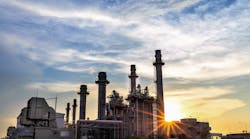The U.S. Environmental Protection Agency (EPA) finalized the 2012 percentage standards for four fuel categories that are part of the agency’s Renewable Fuel Standard program (RFS2).
The Energy Independence and Security Act of 2007 (EISA) established the RFS2 program and the annual renewable fuel volume targets, which steadily increase to an overall level of 36 billion gallons in 2022. To achieve these volumes, the EPA calculates a percentage-based standard for the following year. Based on the standard, each refiner and importer determines the minimum volume of renewable fuel that it must ensure is used in its transportation fuel.
The final 2012 overall volumes and standards are:
• Biomass-based diesel (1.0 billion gallons; 0.91 percent)
• Advanced biofuels (2.0 billion gallons; 1.21 percent)
• Cellulosic biofuels (8.65 million gallons; 0.006 percent)
• Total renewable fuels (15.2 billion gallons; 9.23 percent)
Last spring the EPA had proposed a volume requirement of 1.28 billion gallons for biomass-based diesel for 2013. EISA specifies a one-billion gallon minimum volume requirement for that category for 2013 and beyond, but enables EPA to increase the volume requirement after consideration of a variety of environmental, market, and energy-related factors. The EPA is continuing to evaluate comments from stakeholders on the proposed biomass based diesel volume for 2013 and will take final action next year.
For more information on the EPA’s standards and regulations, click here.
For ?more information on renewable fuels, click here.

